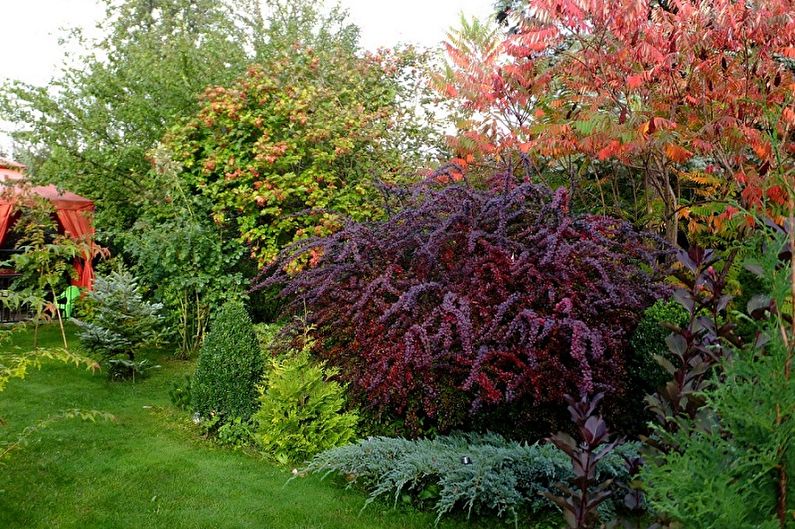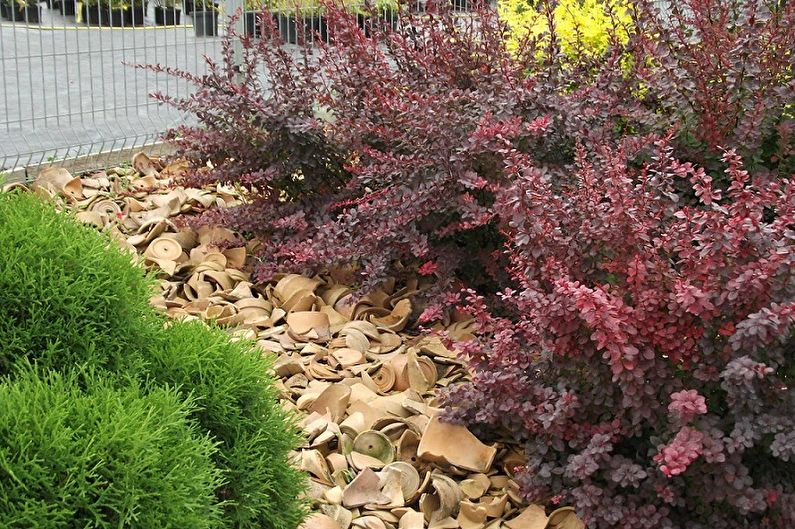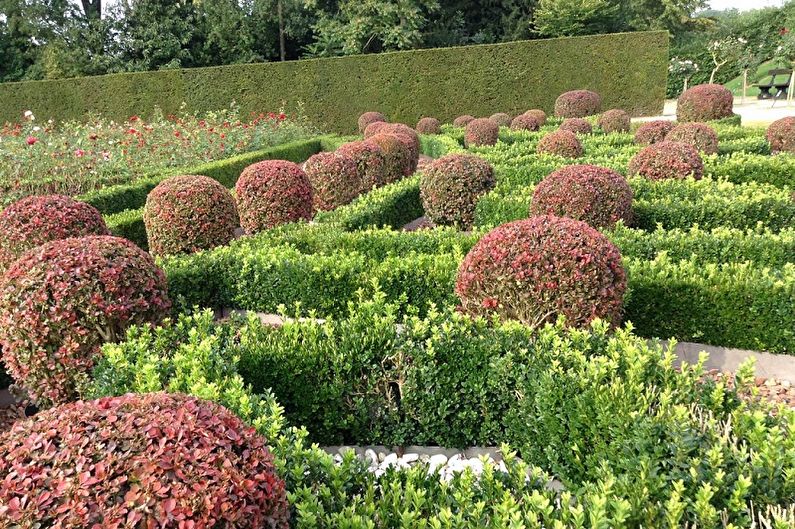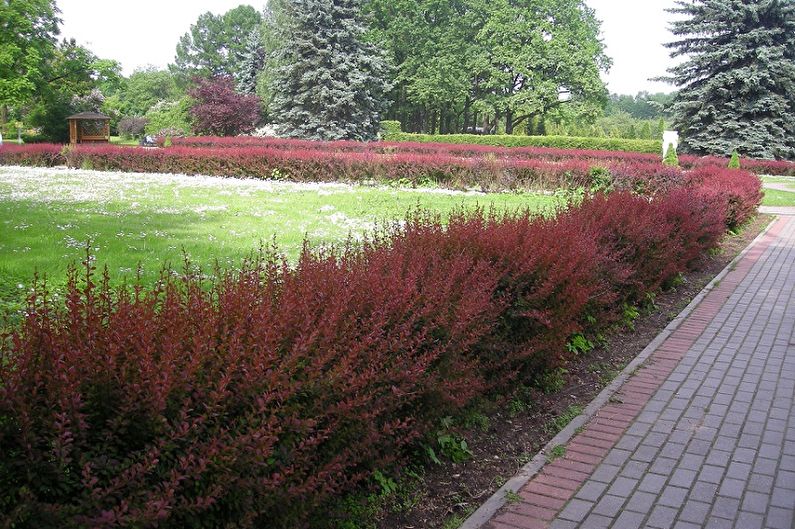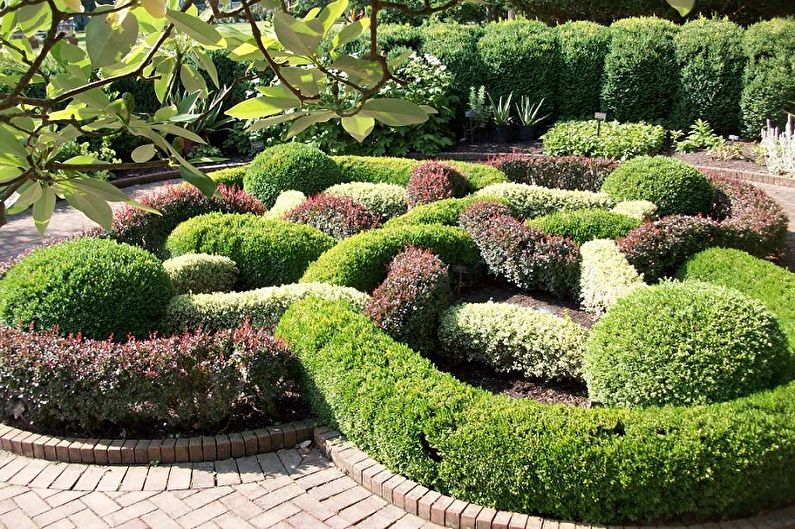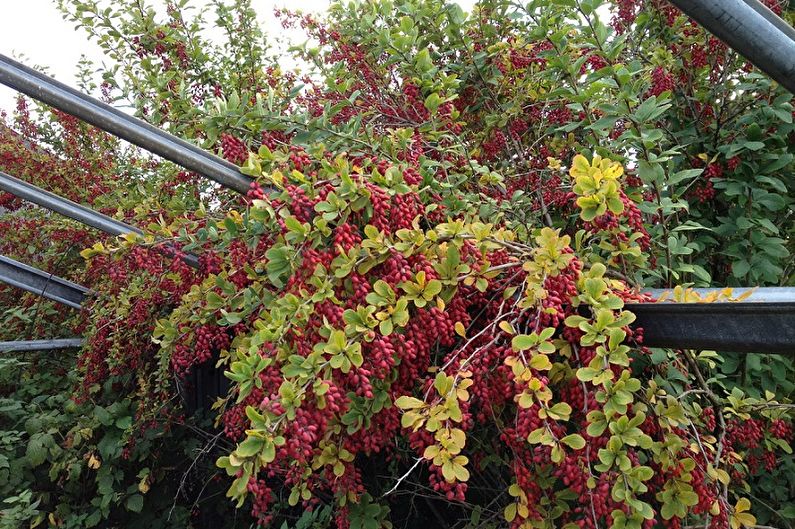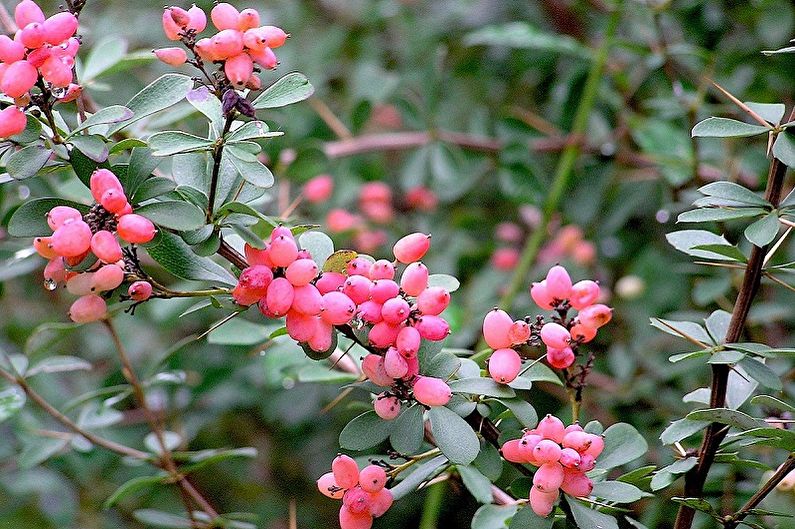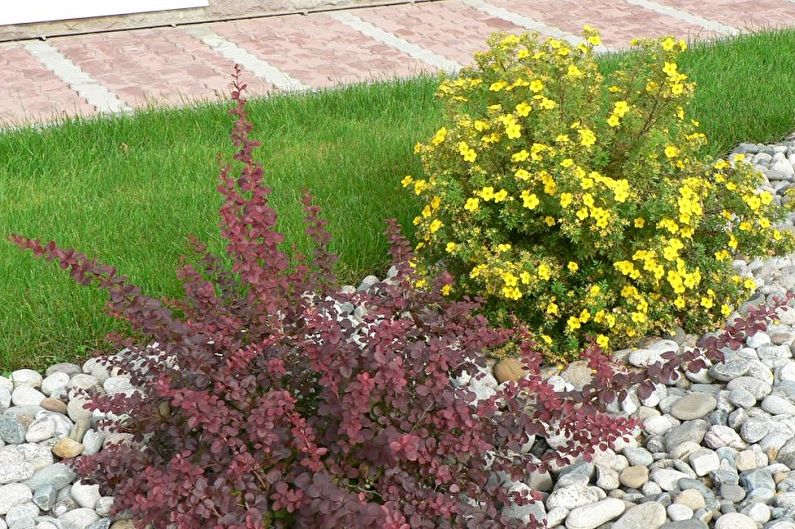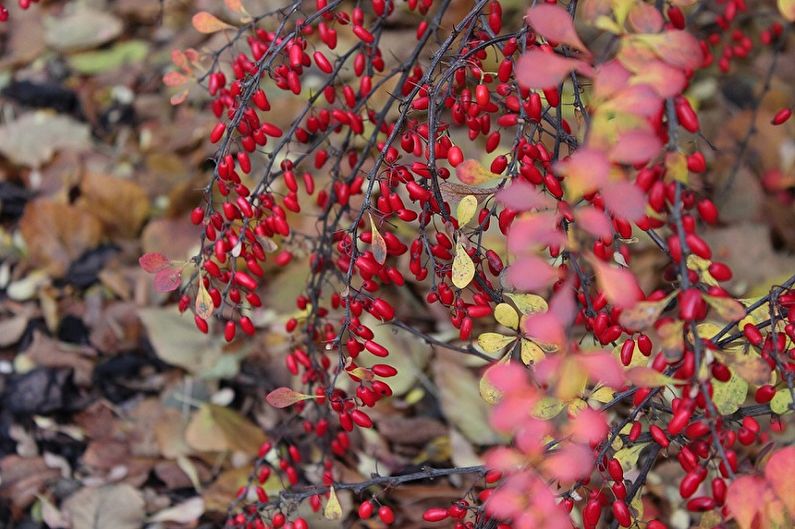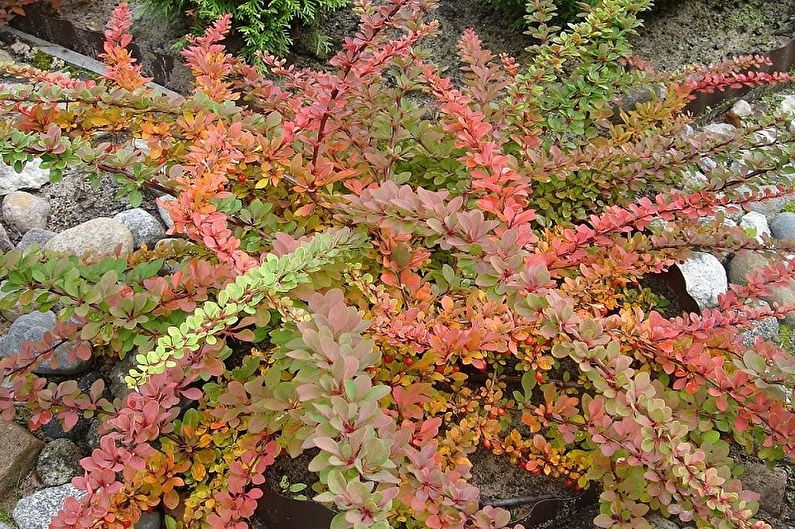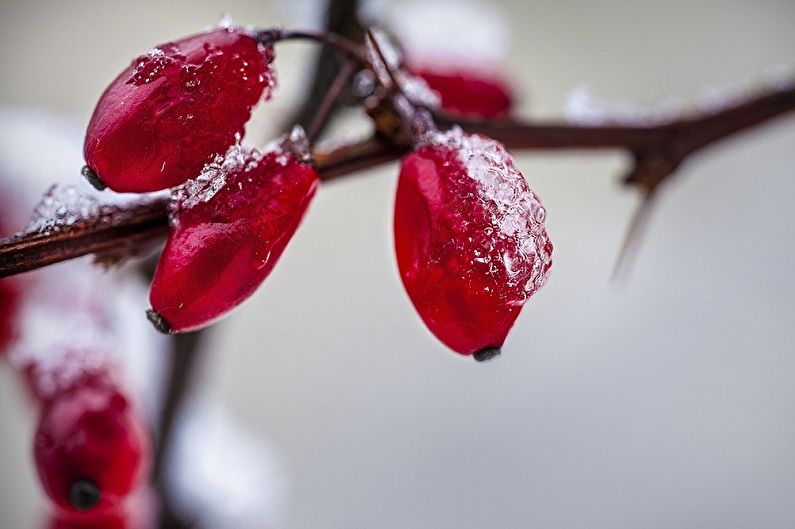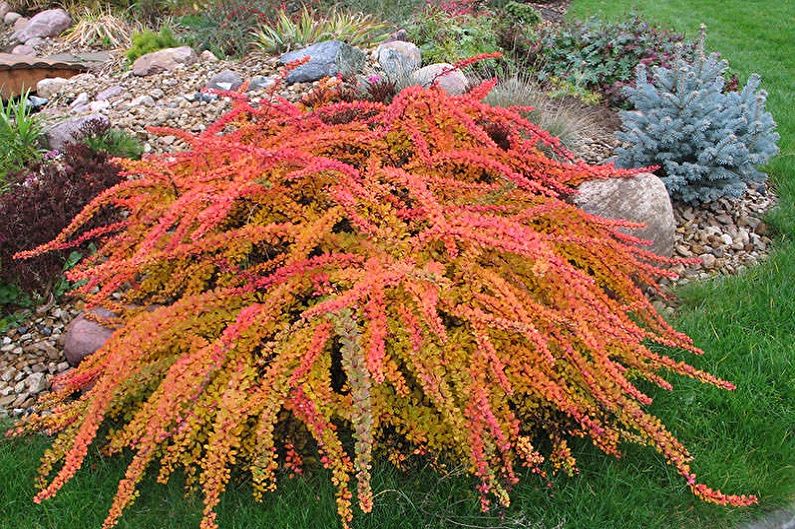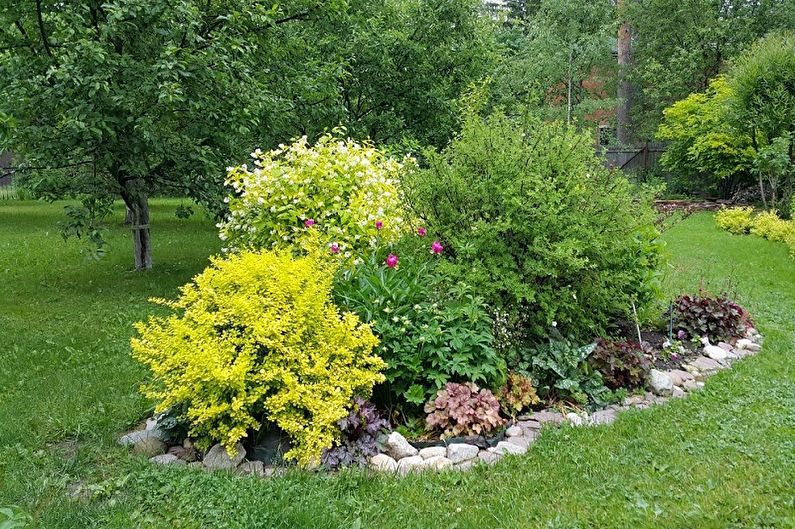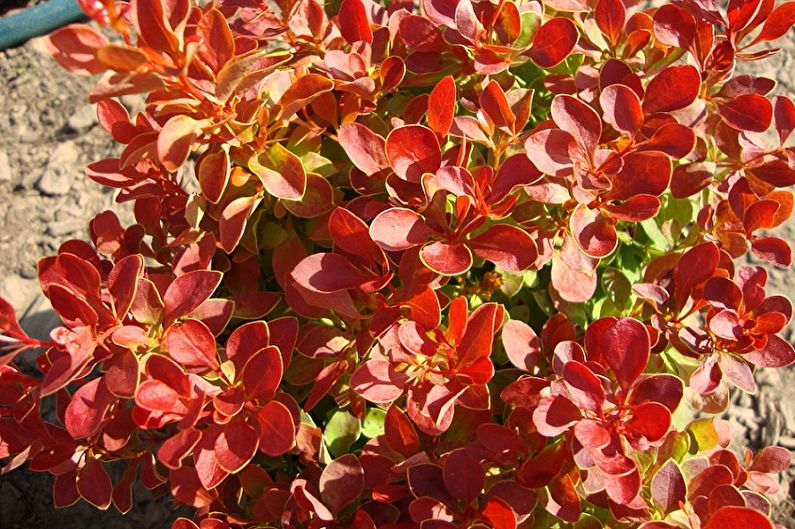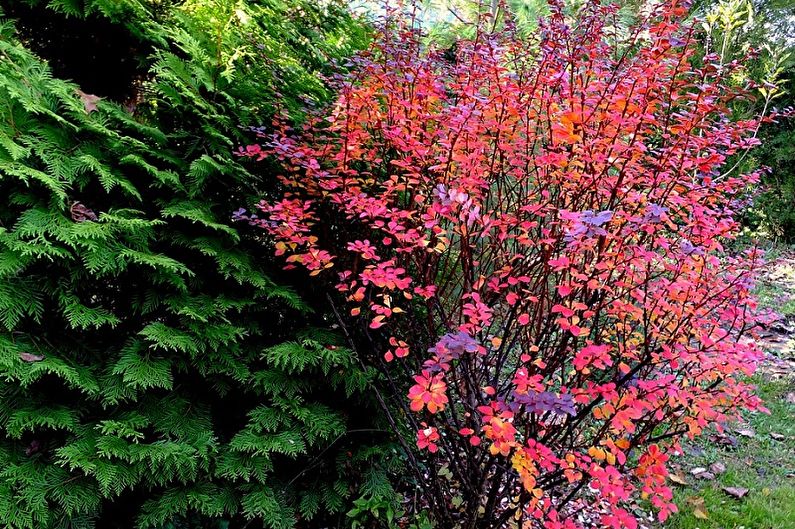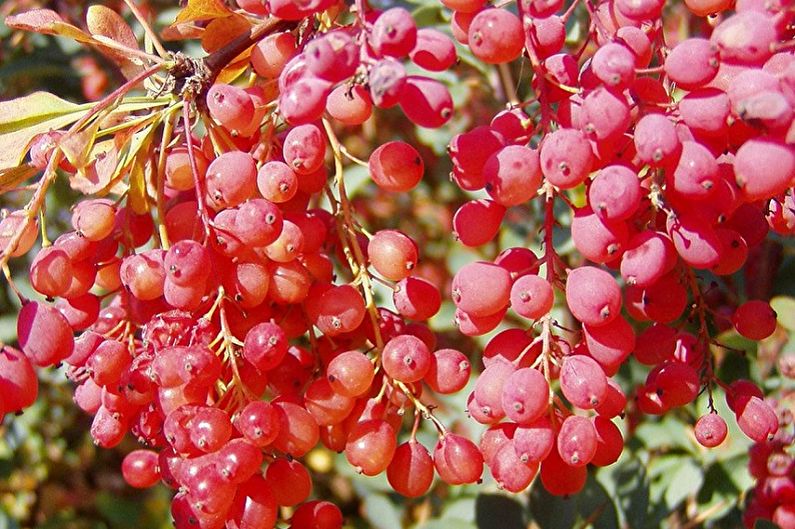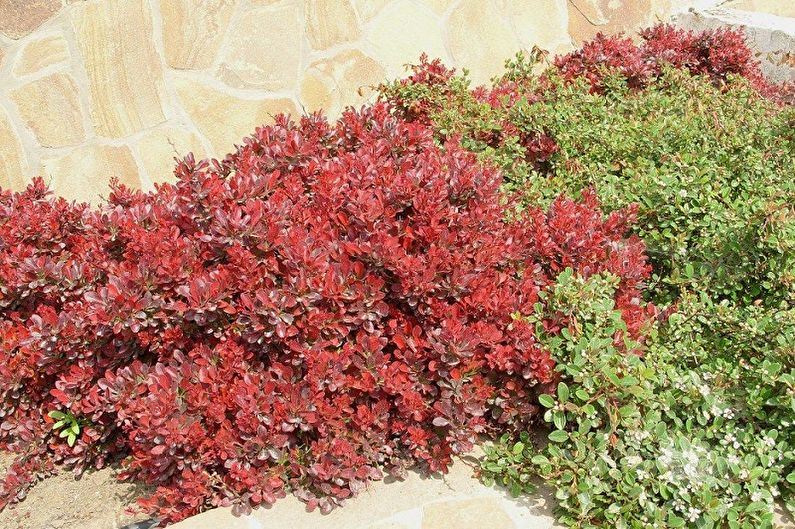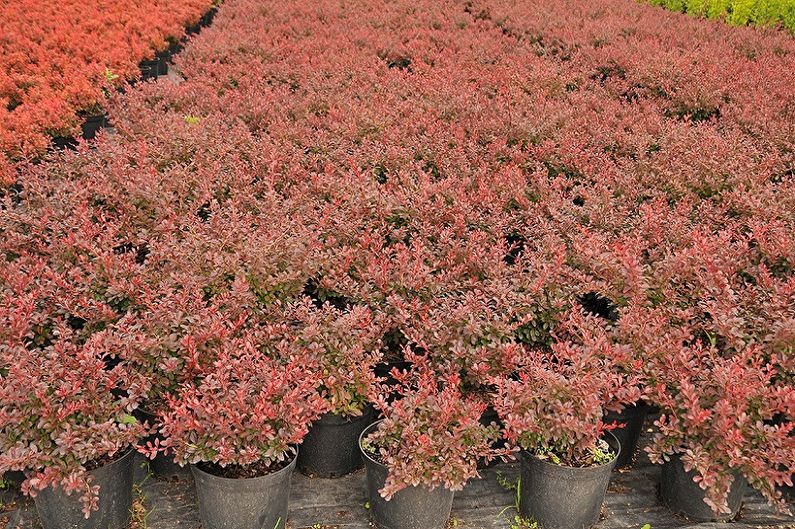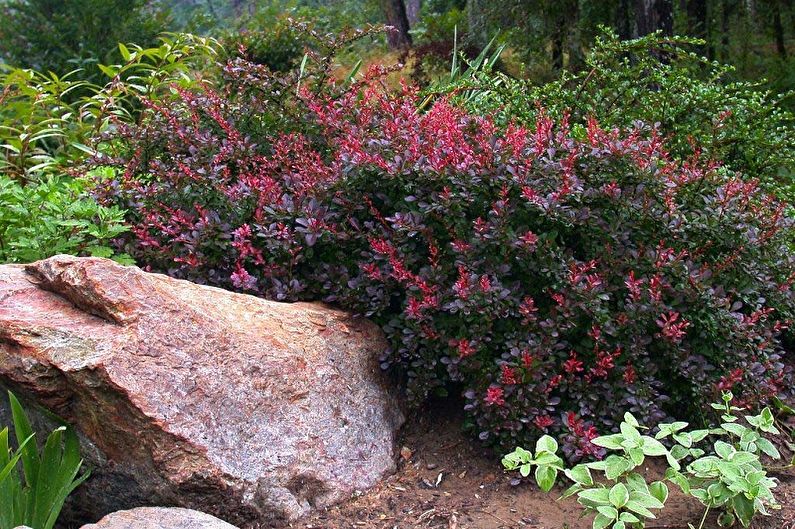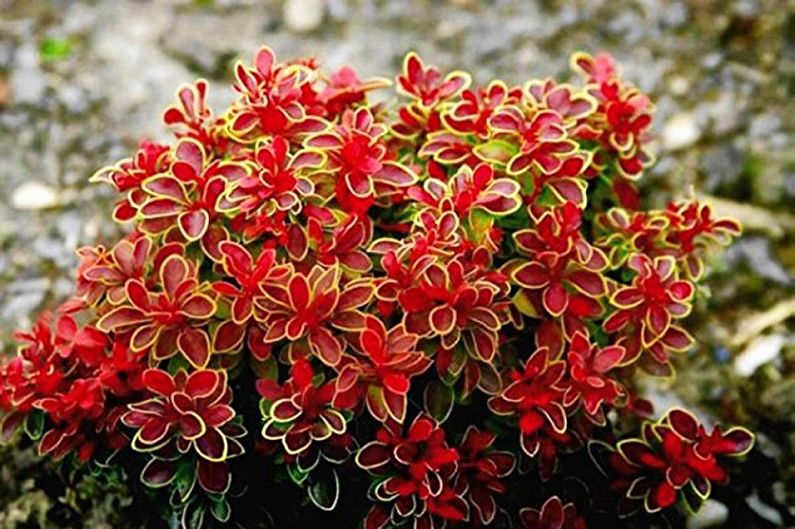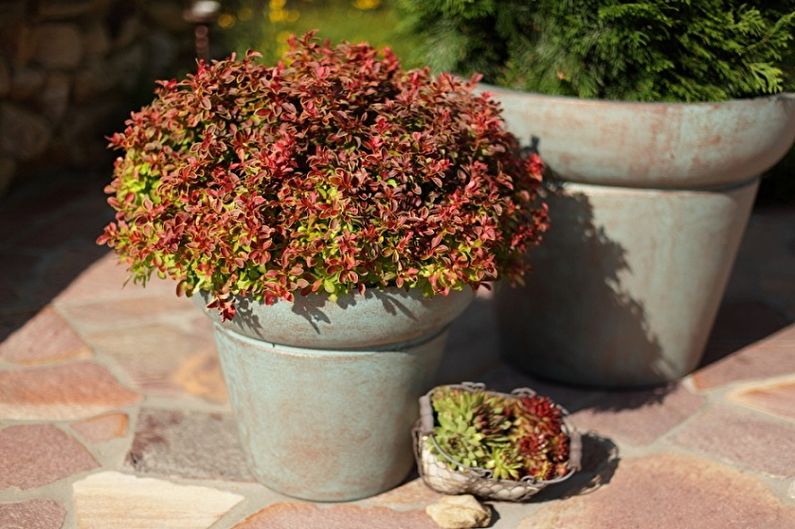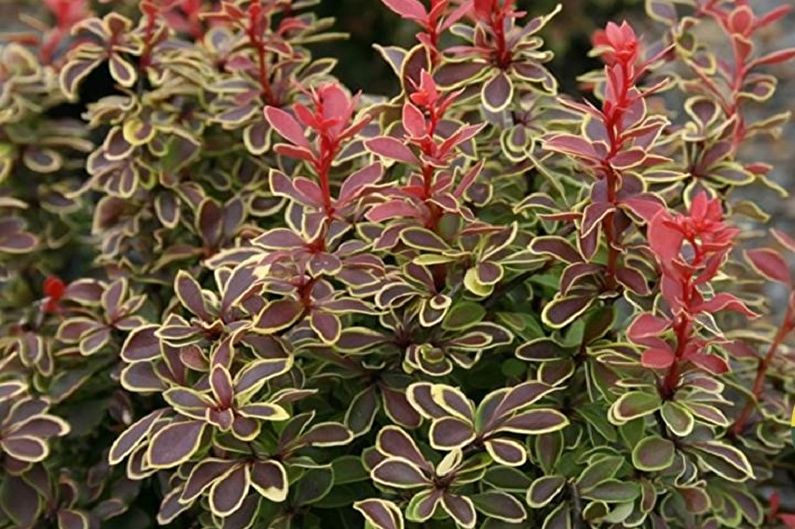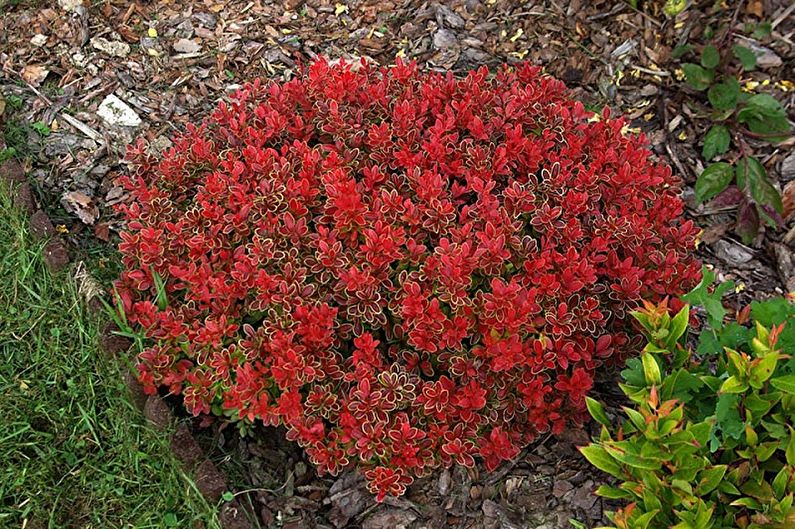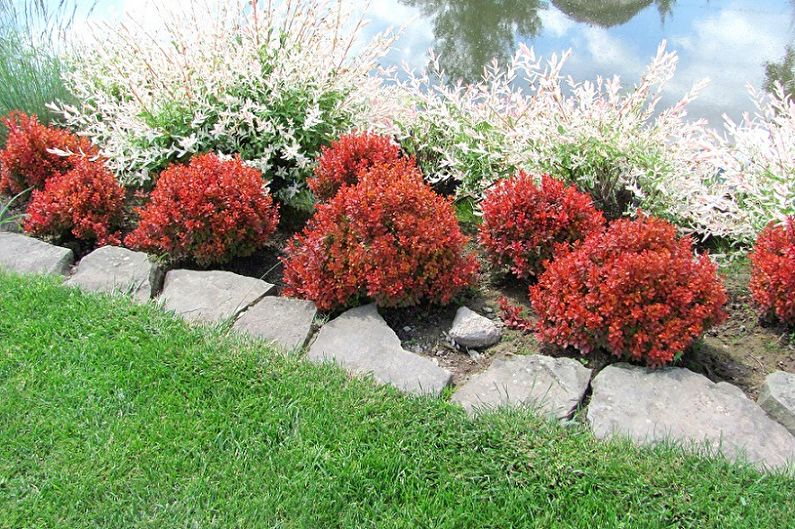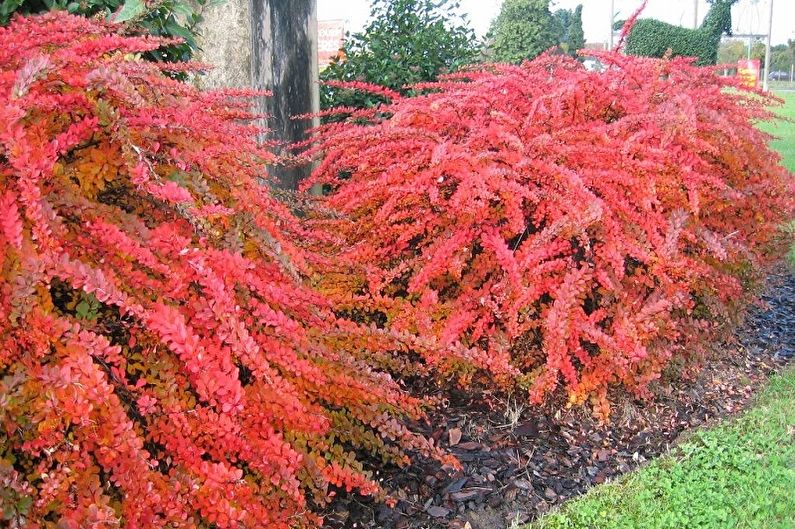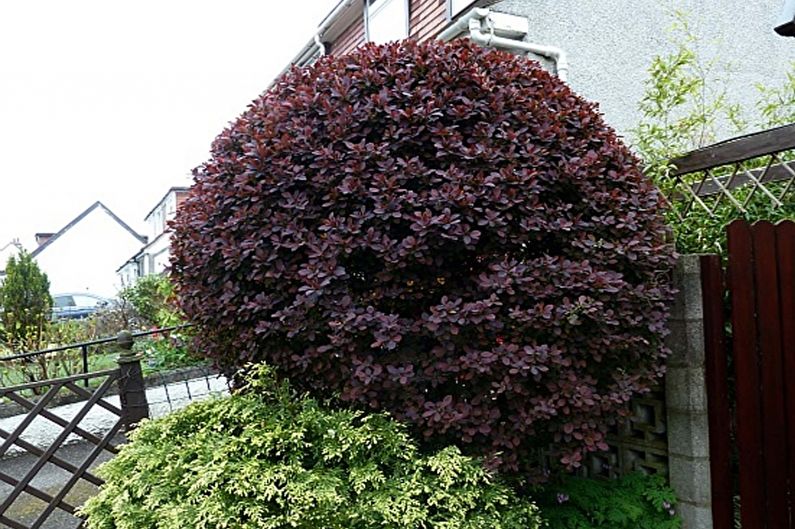
A plant with such a beautiful name, of course, cannot but be distinguished by decorativeness. Excellent yellow-red flowering of barberry, which begins in the spring, smoothly turns into a fiery-purple color of foliage in the autumn period, so you can admire it for a long time. Bushes are often sheared, creating the most bizarre shapes. In addition to aesthetic value, barberry is famous for its use in culinary recipes and for its medicinal properties - it reduces pressure, helps in the treatment of ulcers, liver, rheumatism, inflammatory processes of the kidneys and bladder, and most importantly - promotes active longevity.
The main types
Under natural conditions, there are about 500 species and many varieties of barberry, which can not only decorate any garden, but also become a component of the dish. Species differ in the height of the bushes, color, color of fruits and leaves, purpose. Shrubs can be dwarfs and giants, so it will not be difficult to choose the necessary variety for landscape design. Consider which species are most often found in gardens of adjoining territories.
Barberry ordinary
He is considered the main among the "barberry diversity." The adult shrub reaches three meters in height, has elliptical leaves, beautiful yellow fragrant flowers and numerous bright red berries. Barberry ordinary is quite unpretentious in choosing a territory - it grows beautifully both in the sun and in partial shade, easily tolerates frosts. Berries that are used in cooking are especially valuable in plants of this type - they prepare preparations for the winter, add to marinades, pilaf, and fried vegetables. Varieties such as Juliana and Aureomarginata have gained trust among gardeners.
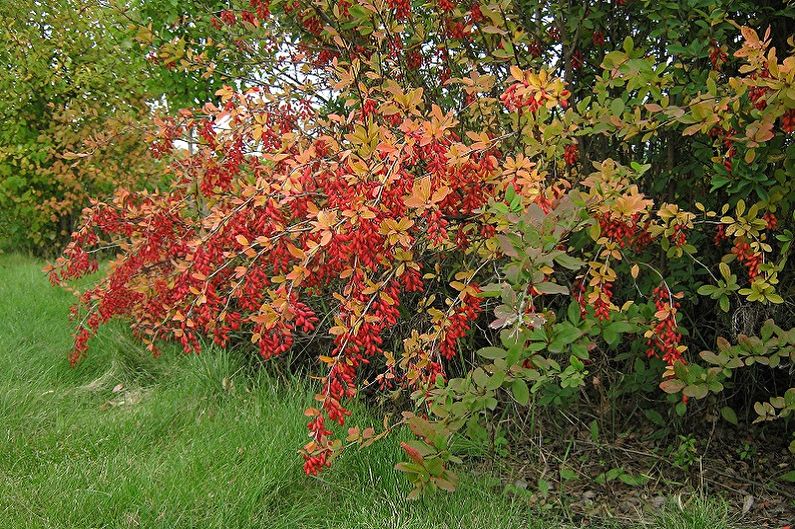

Barberry of Thunberg
The decorative qualities of this beautiful shrub define him first place among the species. In the wild, it grows on the slopes of the mountains of India and China, and got its name in honor of the Swedish botanist Karl Thunberg - the first European naturalist.
Its height is relatively small, ranging from 0.5–1 m. It has horizontally extending branches and branching shoots that become purple with age. Flowers with double-colored petals look amazingly beautiful - they are red on the outside and yellow on the inside. In early autumn, red-coral fruits ripen, which adorn the autumn landscape to frost and serve as food for wintering birds.
The most popular varieties of Thunberg barberry are such as Golden Ring, Red Pilar, Orange Rocket. The smallest bagel is considered to be the smallest, which does not grow above 40 cm. The variety is often used when decorating live borders.
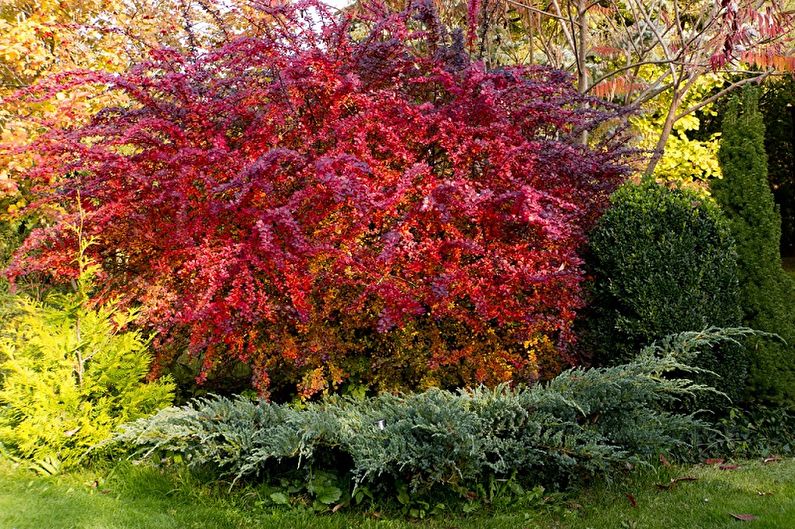
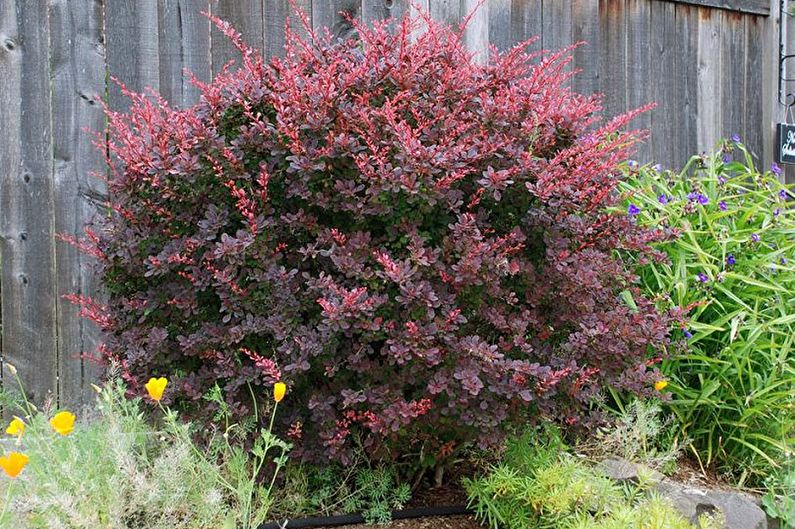
Ottawa barberry
This is a hybrid form that can be attributed to the most spectacular representatives of this culture. The adult bush reaches a height of two meters and is visually similar to the Thunberg barberry, but has dark pink-purple foliage, which appears black in bright sunny colors. Its leaves look especially beautiful in the autumn garden when they are filled with a crimson color.
This species is completely unpretentious in care, tolerates wintering. The most popular varieties are Aurikoma, Superba, etc.
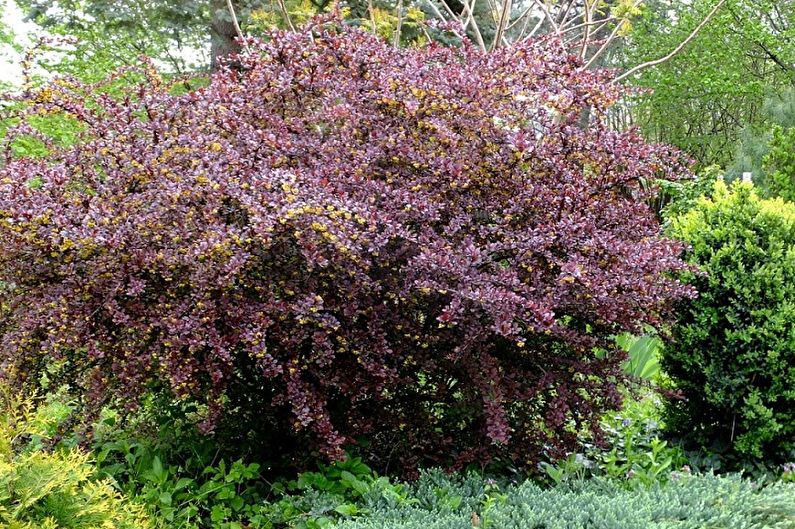
Proper Barberry Care
A distinctive feature of barberry is its undemanding nature. If the bush is properly planted and fertilized, human intervention may not be necessary at all. However, the location of the plant in improper conditions can lead to a loss of decorativeness, and in some cases, death.Consider what conditions are most suitable for a given culture.
Lighting
Barberry belongs to the category of photophilous plants. It grows well in open areas, well-lit by sunlight throughout the day. In partial shade it can also exist, but over time the decorativeness of the leaves is lost - an unusual yellow and red color can gradually transform into ordinary green.
When planting barberry in groups, the distance between the bushes should be at least 1.5 m.
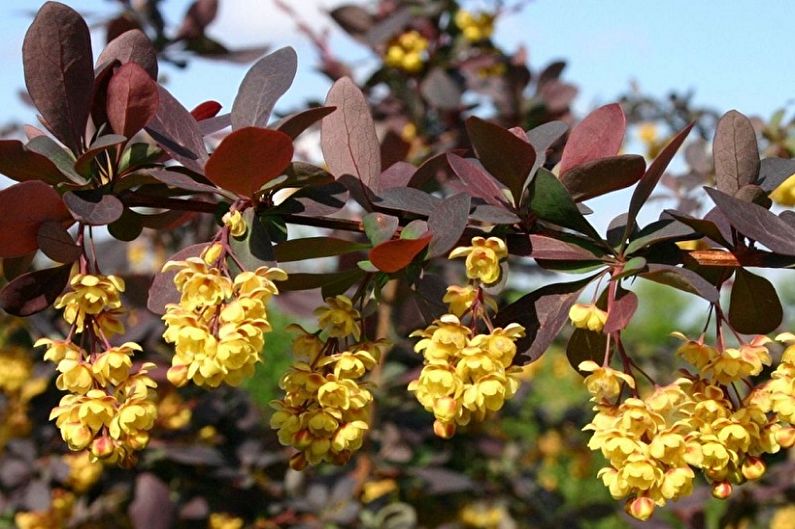
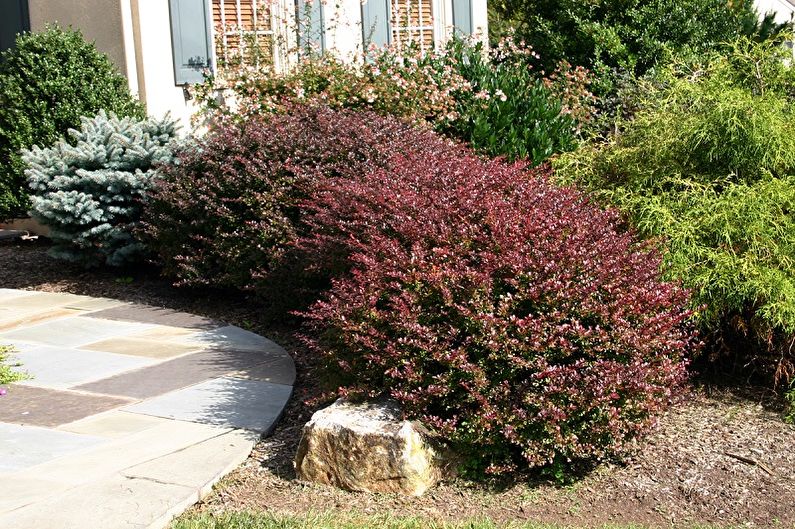
Temperature
Most varieties of barberry are frost-resistant and heat-resistant. Almost everyone is able to tolerate summer heat up to + 40C and winter frosts up to -25C.
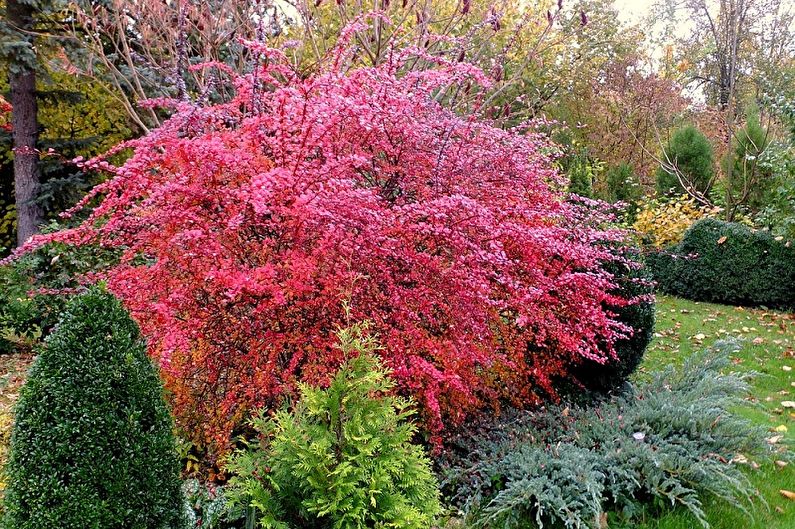
Humidity
Barberry tolerates drought and can stay for a long time without watering or rain. Waterlogging causes significant damage, as a result of which the root system rots. When choosing a site for planting, you should not choose places with heavy clay soil or located in lowlands where rainwater stagnation will form.
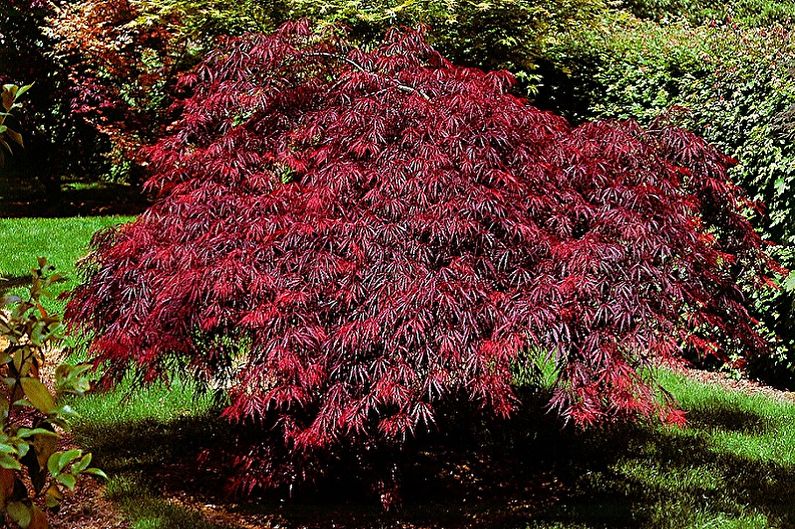
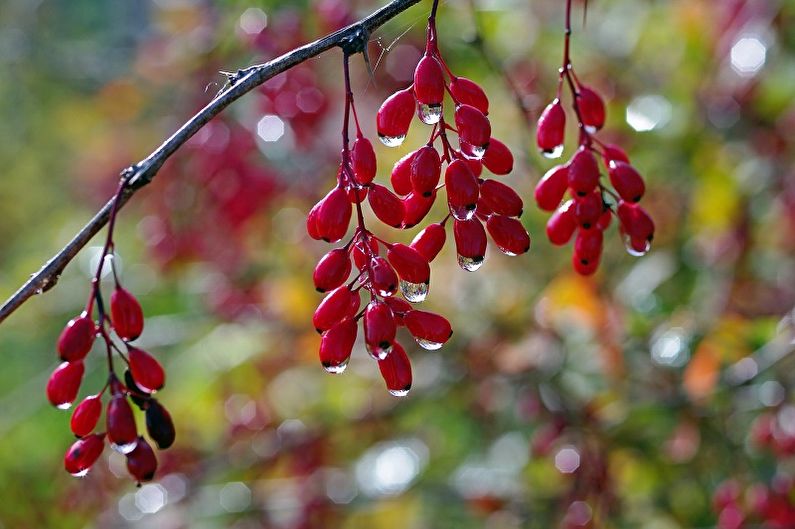
Watering
Particular attention to watering is required only at the stage of adaptation of transplanted specimens or young seedlings. At this stage, you need regular watering of the settled water heated by the sun's rays, as cold water will inhibit the plant. Moisture is delivered to the root zone, it is very important that it does not fall on the leaves. Adult barberries are watered as needed - during rainy periods, additional moisture is not needed, and in dry times you can moisten the soil once a week.

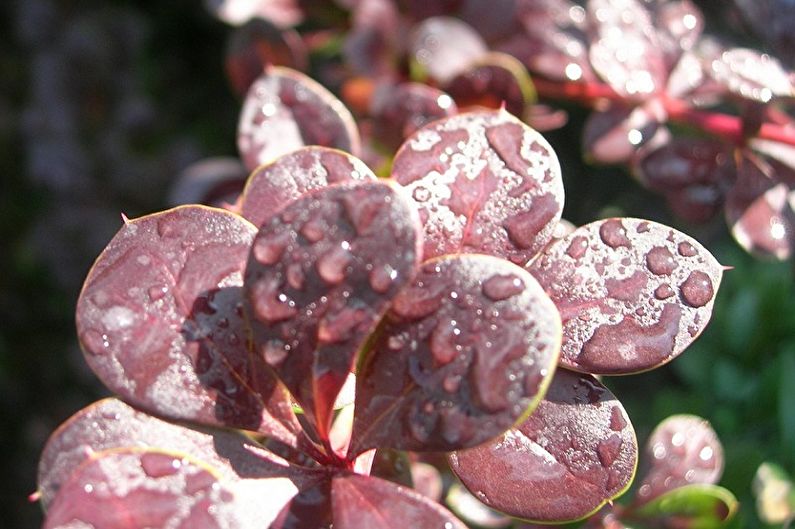
Fertilizers and fertilizing
It is necessary to feed and fertilize the soil where barberry grows, starting from the second year after planting. In the spring, nitrogen fertilizers are applied. This can be bird droppings diluted with water, urea (20 g / 1 bucket) or slurry. The next time this feeding is carried out after a few years. Complex mixtures with trace elements are introduced in anticipation of buds opening, and with the advent of autumn, they are sprinkled with potash and superphosphate compounds under the bush.

Diseases and Pests
Of the most dangerous diseases for barberry, fungal infections often occur, affecting the plant under adverse conditions. These include the following:
- Powdery mildew - develops gradually, first it affects the foliage, and then the stems, appearing whitish bloom;
- Rust - the disease is characterized by brown spots and bulges on the leaves, which contain thousands of fungal spores. With a strong infection, the plant dies;
- Spotting - is determined by the presence of spots of various shapes, drying of young shoots.
- Also a serious ailment is wilting, when a fungal infection gets through the roots, gradually affecting the whole plant, which is not always possible to save.
Of the variety of pests to which the culture is no less attractive than its owners, the most harmful are barberry aphids, sucking juices, and flower moth larvae devouring berries.
In the fight against ailments, complex preparations (Fitoverm, Biotlin), colloidal sulfur, Bordeaux mixture, the treatment of which is carried out at least three times, have an effective effect.

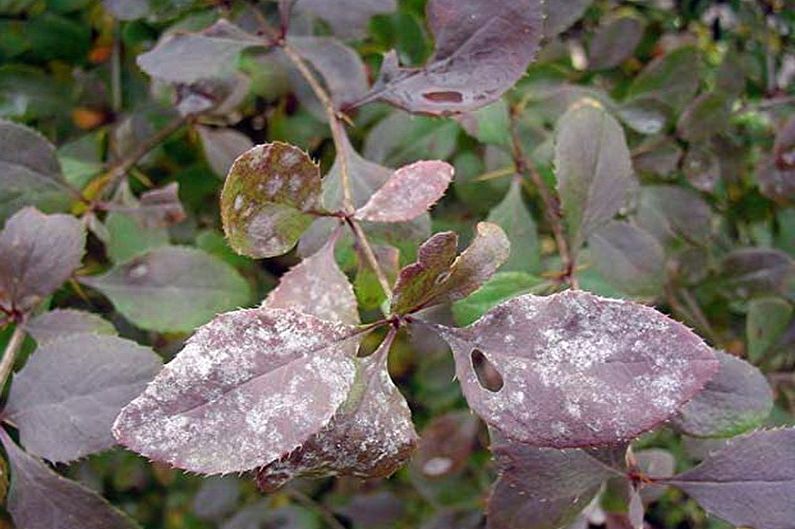
How to transplant barberry
The best time to plant is spring, when the soil has already warmed up, but has not yet dried out. When transplanting barberry, you need to select the illuminated area and dig a landing hole. Its dimensions are determined by the age of the bush, the size of the rhizome. For young biennial bushes, its depth and diameter is 25 cm, and for five-year-old bushes it is up to half a meter.
The landing site must be filled with a fertile substrate containing compost (humus), sand and earth in equal quantities, you can fertilize it with superphosphate. If the soil is acid peaty, you can add lime. It is also necessary to make drainage from pebbles or expanded clay. The bush is planted in a prepared hole, sprinkled and watered. Following is the usual care.
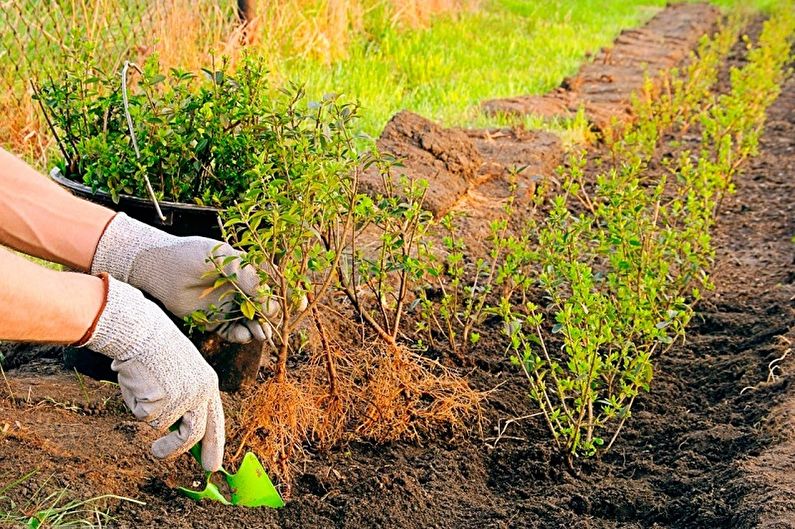
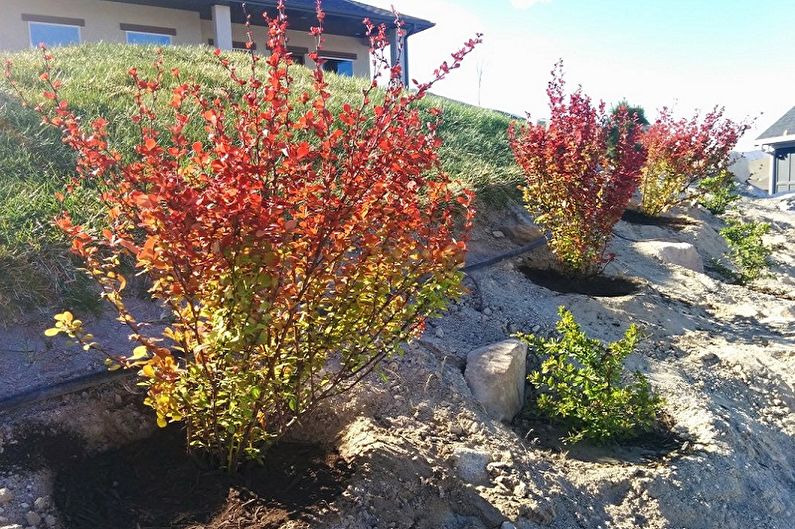
Propagation at home
Barberry can be grown in one of several ways - sowing or vegetative, which involves cuttings, propagation by layering and dividing the adult bush. Gardeners have no consensus on which of these methods is more reliable. To make a choice, you need to know the order and subtleties of each of them.
Propagation of barberry seeds
Barberry seeds can be purchased at the store or collected independently if you need to get a variety that is identical to what is already growing. It is necessary to collect ripened berries, extract seeds from them, rinse them with potassium permanganate and dry. In the open garden you can sow material in the autumn period, slightly deepening the seeds.
With the onset of spring, the beds weed, while simultaneously removing densely growing clusters. It is preferable to leave a distance between the shoots of at least 3 cm. Here the seedlings will stay for about two years, after which the grown bushes are determined by the area of constant growth and transplanted. The first flowering will please only after a couple of years.
To sow seeds in the spring, they must be subjected to preliminary stratification, having stood in the refrigerator for 3-5 months.
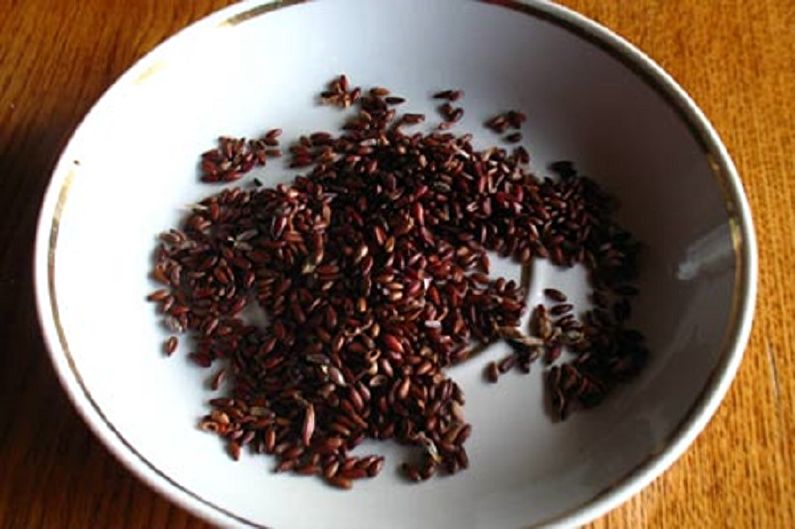
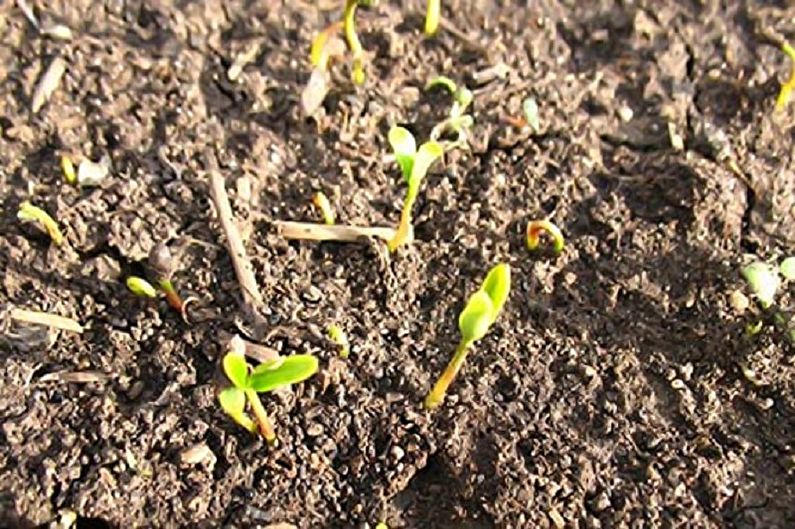
Propagation of barberry by cuttings
To grow barberry from cuttings, you need to create a greenhouse. A shallow container is taken, filled with soil containing fertile soil, humus and peat (adding sand will not be superfluous). Cuttings cut in June and peeled from the lower leaves are dipped in a root-forming solution for several hours, then rinsed and seated in previously watered soil.
The bed is covered with a glass or plastic cap. Cuttings must remain in the greenhouse for two weeks, during which it is necessary to ventilate it daily. Then the cover needs to be removed. Growing sprouts with leaves are transplanted to the "training" garden, where they grow up to two years of age.

Propagation of barberry layering
In the springtime, it is necessary to select the shoot in the lower sector of the bush, tilt it to the ground and fix it in a pre-prepared elongated hole, up to 20 cm deep. The barberry branch is sprinkled with soil above, and only its top remains above the ground. Rooting will end by autumn - then fresh seedlings will be ready for transplanting.
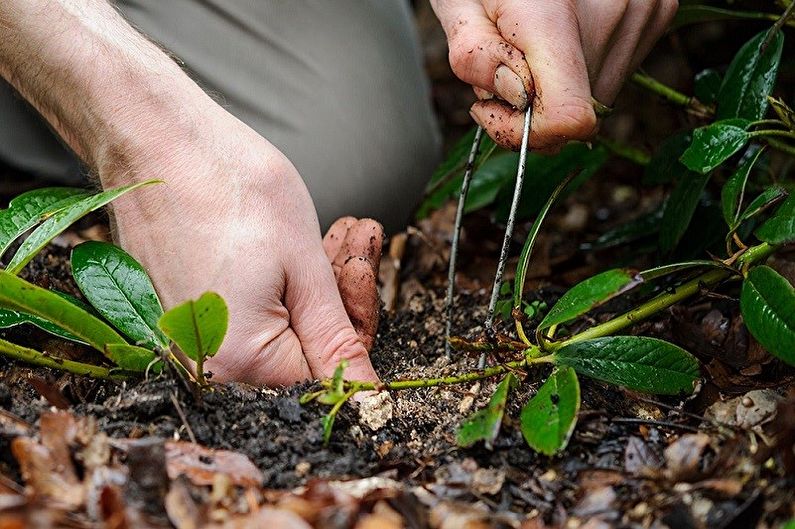
Propagation of barberry by division
This method is used for low varieties that have reached 3-5 years of age. To divide the bush, you need to carefully dig it out, and then separate the parts with secateurs (in some cases, the use of a garden saw is required). It is necessary to work extremely carefully so as not to severely injure the rhizome. All formed sections must be crushed with crushed coal, which will prevent possible rotting. Delenki are seated in separate, pre-equipped pits.
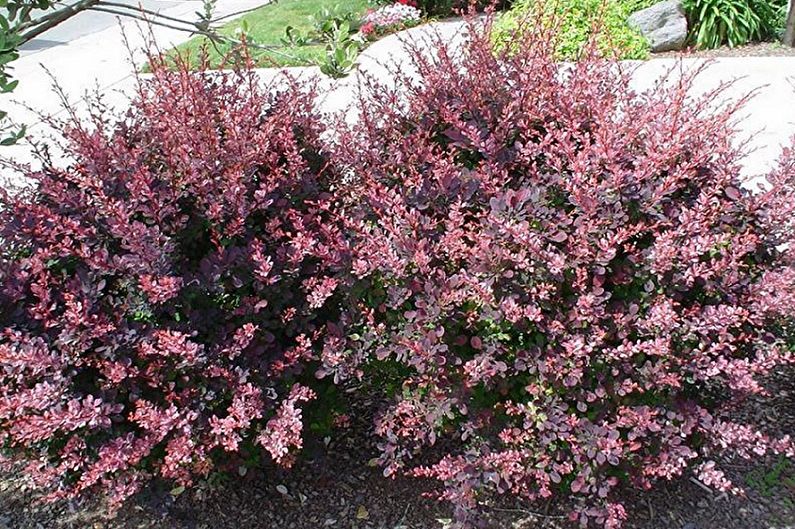
Barberry - photo
Closer to get acquainted with the beauty of the wonderful and healthy barberry we offer in our selection of photos, which show its various types and varieties. Also here are illustrative examples of how the bushes are sheared, getting original shapes. Enjoy watching!
